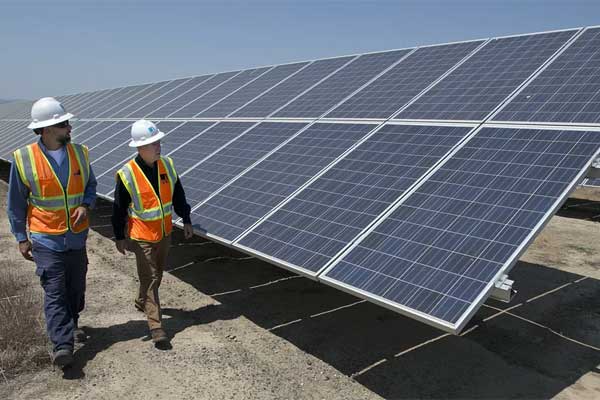Recent reports that solar capacity will soon exceed nuclear capacity reveal an important fact. It also hides a crucial distinction needed to understand the context of energy production and use and consequences of choices among supply options for the future.
As executive director of the Waterloo Institute for Sustainable Energy (WISE) and lead author of the Equinox Blueprint Energy 2030, a technological roadmap for a low-carbon electrified future, I have investigated energy options, alternatives and their utility. I have also found that people get confused with terminology.
Capacity installed in kilowatts (kW) is not equal to energy produced in kilowatt hours (kWh) — and the energy services we demand and pay for (such as cooking, cooling, lighting, entertainment) is measured in kilowatt hours. For large-scale, industrial purposes, the output is measured in megawatt-hours (MWh) or gigawatt hours (GWh).
The technical capacity of any energy technology to deliver useful energy is measured as energy output. Because of the efficiency of energy conversion, solar energy output tends to be low.
For example, the energy produced from a large number of solar arrays combined as 1,000 megawatts (MW) installed capacity will deliver, on average, an energy equivalent of 10 to 12 percent of its capacity. In contrast, a nuclear plant delivers energy at 80 to 90 percent of its rated capacity.
The current global installed capacity of 224,684 MW provides energy output of 253,593 GWh, equivalent to an annual capacity factor of 11 percent. Similarly, Germany’s installed capacity of 39,784 MW results in the energy output of 36,056 GWh at a capacity factor of 10.3 percent.
So, for the same installed capacity, solar energy produced is eight to nine times less than nuclear. If you want the same amount of energy, then you would need to install an equivalent solar capacity that is higher by as large a margin — eight to nine times the number of additional solar arrays.
Less hype, more fact
The point here is not to diminish the value and positive contribution that solar can make towards reducing our dependence on fossil fuels to help achieve a global energy transition towards a low-carbon energy future.
The hype needs to be tempered by a realistic assessment of the emerging energy demand at the global level and the effective capability of meeting growth in energy demand on a very large scale.
You don’t want to get conscripted to the view that one energy option — solar — is the sole answer, and it also happens to be an option that does not deliver large volumes of energy from the installed base.
Future of energy is diverse and distributed
The scope and scale of change required to meet climate change targets are anything but trivial. This suggests a complementary and reinforcing role for many different energy technologies with low-carbon attributes such as wind, solar, hydro, geothermal, nuclear and natural gas as an interim substitute for coal.
The approach is complementary because each technology has characteristics that require attention to its limitations and ensure it can function as part of an integrated energy system that delivers best value to the end user.
The emerging energy system of this century will not look anything like the energy system of the past century dominated by central power-generating stations transmitting energy over long distances to cities, towns, and villages.
Distributed energy resources — best exemplified by solar as Exhibit A — combined with the power of information and communication technologies (ICT) will increasingly become relevant in our lives.
Imagine a household becomes both an energy generator (solar on the roof) with an electric vehicle capable of storing energy (from wind and solar) and selling the energy back to the wires when it is profitable to do so. All of this could be managed seamlessly through a virtual power network enabled by ICT. Thus, a consumer has now become a producer and a consumer — a “prosumer.”
Technology entrepreneur Elon Musk’s company, Tesla, Inc., is working to make that vision a reality today with its electric cars, solar-cell roof tiles, home energy storage, and networked, grid-connected battery systems currently being installed in Australia.
Decentralized power generation
Will distributed energy become truly disruptive and completely undermine both the business model of the existing utilities and the investments in the large centralized infrastructure?
In my view, distributed energy resources can be best recognized as a positive force that will help reinforce and increase the reliability and resilience of the “big grid.” They also bring an environmental emissions attribute that helps to amplify a positive trend towards a low carbon energy future.
Why do we need large, centralized generating stations at all? The global energy demand to 2050 will either double from current levels or triple. This is primarily driven by demographics and income shifts.
The world’s population is forecast to approach nine billion people in 2050 — with many to shift in income from extreme poverty to low- and middle income levels — which means an inexorable upward pressure on need for energy. A warming climate is another driver of growth in energy demand for cooling.
Improved economic well-being combined with an irreversible shift towards intense urbanization creates a scenario that is difficult to deflect: We are faced with an emerging global context that is shaped by a critical dependence on high quality energy services to a growing, richer population that faces more thermal stress than ever before.
The amounts of energy we need are large, not necessarily because we are energy hogs, but rather that we desire an improved quality of life. This will require a major fine-tuning of the existing energy system that can exploit the best features of all available energy sources in unison.













Comments